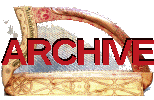

|
The Irish music collector Edward Bunting met Denis O’Hampsey at the Belfast harpers’ meeting in 1792, and subsequently visited O’Hampsey at his home in Magilligan during the 1790s.
Bunting collected a number of very important pieces of music from O’Hampsey’s playing. Most important are Burns March, one of the beginners tunes and the only piece of ceòl mór notated in a Gaelic harp setting, and Scotts Lamentation, a formal aristocratic lament said to have been composed in 1599, but also including baroque variation sets by Cornelius Lyons and other 18th century Irish harp repertory.
Bunting’s field notes direct from O’Hampsey’s playing survive in Bunting’s ms29 notebook, and contain a great deal of subtle information about Gaelic harp playing technique including bass notes and ornaments.
Also in ms29 is the list of notes that the Downhill harp was tuned to:
Hempsons harp 1702

(my hand copy from Bunting ms29 p.153 (f74v), at Queens University Belfast.)
This chart shows a number of important features, including the two strings tuned to g below middle c, which are called na comhluighe, and the gap in the bass. Bunting explained these in his list of Irish harp terms published in 1840, which seems at least in part to be drawn from O’Hampsey’s information.
There still remain problems; the harp has 30 tuning pins but 32 string shoes, which means that there are three possible stringing configurations: missing two shoes at the bass, missing one in the bass and one in the treble, or missing two in the treble. Also we do not know what pitch standard would be used to fix the frequency of the note g, which Bunting tells us was used to start the tuning cycle in 5ths and 4ths.
But despite these ambiguities, this is of great value to us in giving us a complete chart of how one of the old Gaelic harps was tuned.